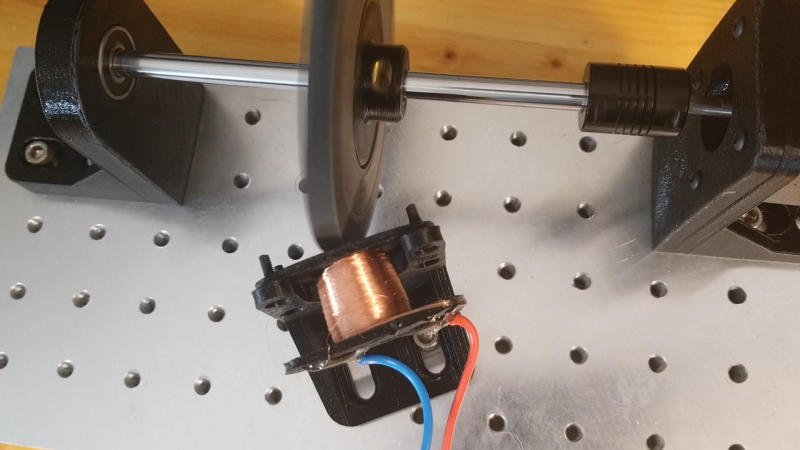What can you do with ferromagnetic PLA? [TheMixedSignal] used it to give new meaning to the term ‘musicians’ gear’. He’s made a proof of concept for a DIY tone generator, which is the same revolutionary system that made the Hammond organ sing.
Whereas the Hammond has one tonewheel per note, this project uses an Arduino to drive a stepper at varying speeds to produce different notes. Like we said, it’s a proof of concept. [TheMixedSignal] is proving that tonewheels can be printed, pickups can be wound at home, and together they will produce audible frequencies. The principle is otherwise the same — the protruding teeth of the gear induce changes in the magnetic field of the pickup.
[TheMixedSignal] fully intends to expand on this project by adding more tone wheels, trying different gear profiles, and replacing the stepper with a brushless motor. We can’t wait to hear him play “Karn Evil 9”. In the meantime, put on those cans and check out the demo/build video after the break.
We don’t have to tell you how great Hammond organs are for making music. But did you know they can also encode secret messages?
https://www.youtube.com/watch?&v=IZxV41eESZ4
Via the Arduino blog.
















Make 12 cone rotors and spin them with steppers and a chromatic source. 96 or so pickups and you are there.
Rather than having say six tone wheels and a fixed pickup for each and playing it like a piano. Perhaps single cone shapped gear and one or more pickups on a slider. Maybe use an old scanner or printer to automate the slider and have a continuously variable note.
Replacing the stepper with a brushless motor doesn’t improve things – it’s just a stepper with fewer steps.
What he needs is a flywheel and an elastic coupler to damp the vibrations.
I did this too, a couple of years ago, thinking to turn a bicycle into a musical instrument. Then, other projects took over https://scontent.fams1-2.fna.fbcdn.net/v/t31.0-8/12052483_1151957621485131_3327029508088543998_o.jpg?_nc_cat=104&_nc_oc=AQlzDXKNcfVKBNq1OEiVPf3GCGvpE0Cz9fEgFdHrzw6z-xqFf5udF68ZH9_FQKrvpOY9-86PkZR8hYvIgxEk8viO&_nc_ht=scontent.fams1-2.fna&oh=252be093d35f3a1c6c877d5778308951&oe=5E555D2E